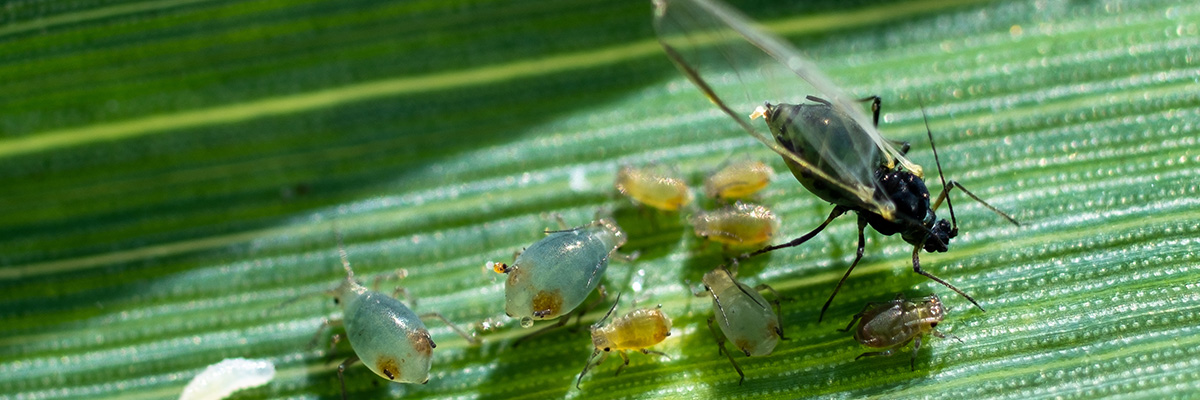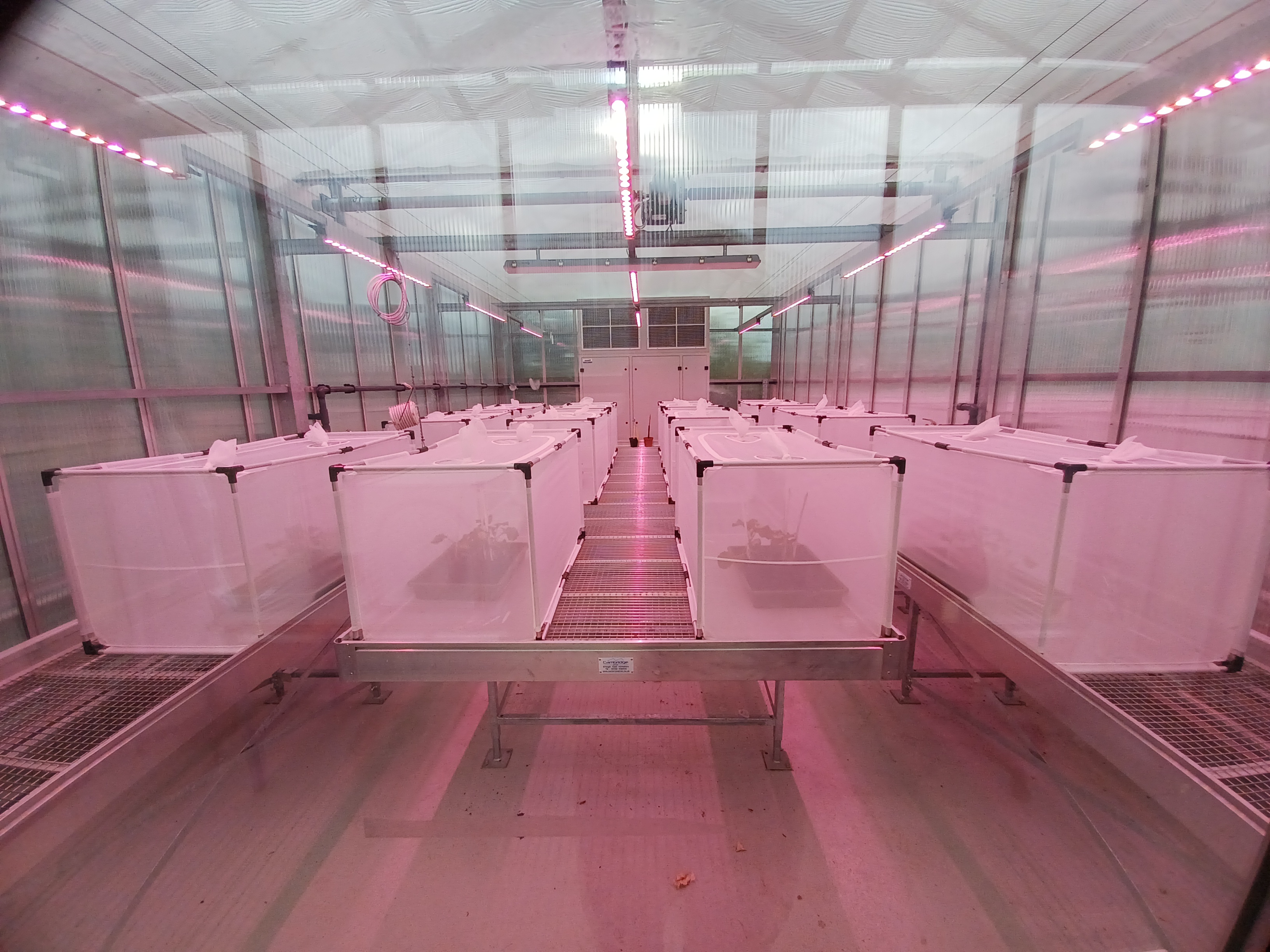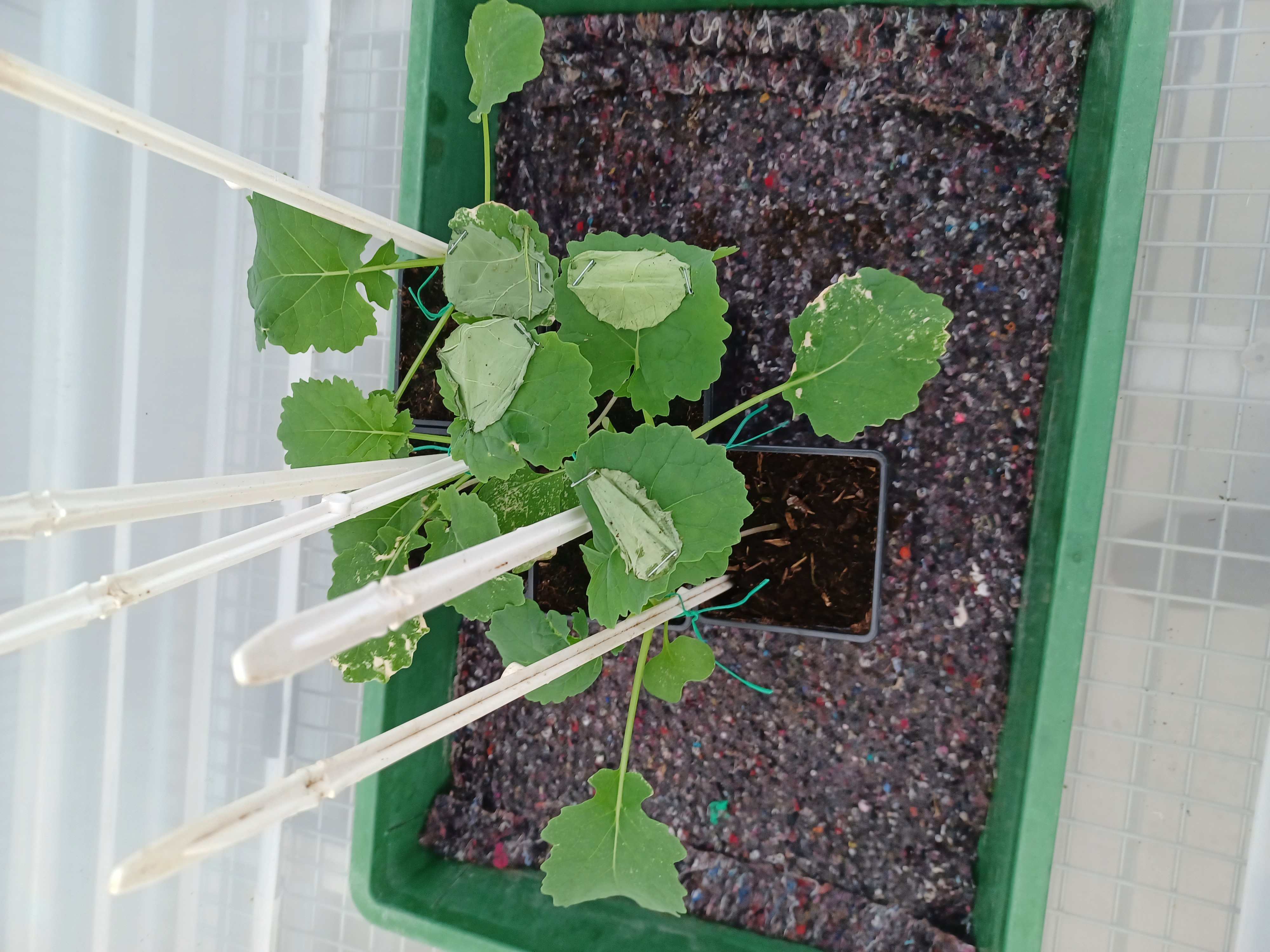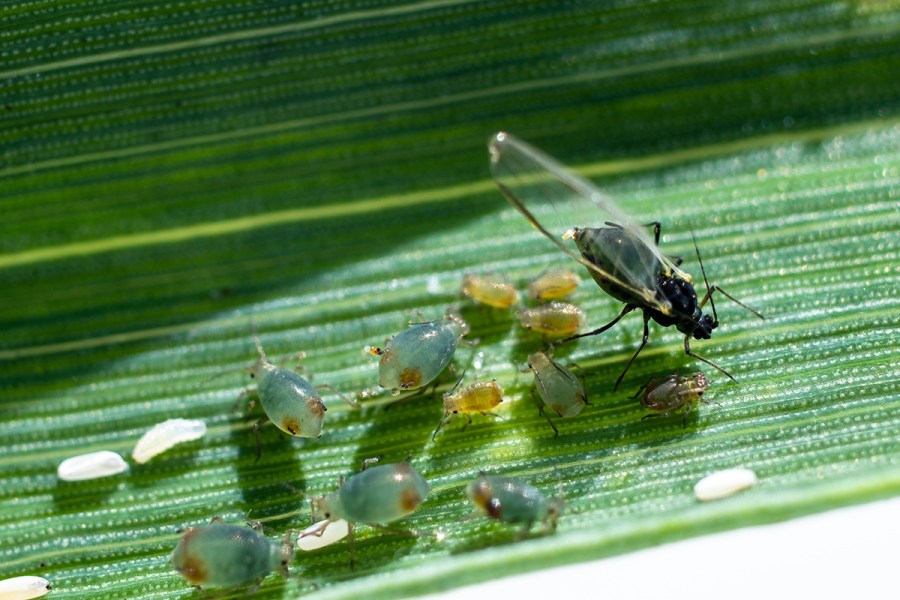
Arguably, the war against insecticide resistance is impossible to win, but with the right advice growers can prolong the battle and keep products effective for as long as possible. CPM looks at how resistance management strategies might change.
It hints that current guidance is counterproductive, and we might not be managing insecticide resistance in the right way.
By Adam Clarke
Good science should always challenge established facts, helping to create new knowledge and understand and even throwing up more questions for researchers to answer.
In the field of insecticide resistance, advice on managing the decline in efficacy of compounds used against crop pests hasn’t changed for many years. However, as regulation takes away active substances and an increasing array of species becoming insensitive to remaining products, it poses the question – is resistance being managed in the right way?
To try and answer this, an AHDB-funded project led by ADAS is testing current advice alongside alternative strategies, with the final report likely to stimulate debate amongst domestic and international insecticide resistance action groups on what is the right advice.
According to ADAS entomologist and leader of the project, Dr Sacha White, insecticide resistance is one of the biggest issues facing the agricultural industry and looking at the facts, it’s hard to disagree.

Before we can expect any substantial changes in the guidance to be accepted by the industry, we need a high level of proof, says Sacha White.
Often for good reason, many key insecticides have been lost over the past decade or so, with regulators deeming the chemicals a risk to humans, the environment, or both.
Over a similar period, resistance to one or more insecticide classes has been discovered in several key pests for the first time, including cabbage stem flea beetle (CSFB), grain aphid, diamond back moth, onion thrips, willow-carrot aphid, bruchid beetle and pea and bean weevil.
And that is on top of pests with a long history of insensitivity to insecticides, such as the peach-potato aphid (Myzus persicae), pollen beetle, western flower thrips and the two spotted spider mite, to name just a few.
The particular concern relating to some of these species is the reliance on just one class of insecticide for control, namely pyrethroids, fanning the flames of resistance further and faster.
CSFB in oilseed rape is the most obvious example once neonicotinoid seed treatments were banned in flowering crops. Encouragingly, many farmers have cut back or even eliminated insecticide use in some crops in recent seasons, but Sacha says they still have an important role to play in integrated pest management (IPM).
Even where growers have followed all the necessary IPM steps to prevent a problem, growers may still have to respond to very high pest pressure in their field with an insecticide application, he says. “Insecticides are going to be part of the system for the foreseeable future, but insecticide resistance is now a major problem.
“It’s more critical than ever that the resistance management strategies used are the right ones. We need to maximise the effective life of the insecticides we currently have, and, very importantly, any new ones that become available,” says Sacha.
The current advice on insecticide resistance management strategies was drawn up by the Insecticide Resistance Action Committee (IRAC), an international panel of experts that generate information on pest insensitivity to insecticides.
It stipulates that when an insecticide is needed to control a pest, it should be applied at its label rate – essentially, it’s not a good idea to apply a reduced dose.
Furthermore, if more than one insecticide spray is needed for a particular pest, insecticides with different modes of action should be alternated as the most effective way of managing resistance.
Where a mixture of two insecticide modes of action is used, the guidance also instructs growers to add each individual component at its full label rate (though use of insecticide mixtures is rare in UK crop production).
Several years ago, Defra and AHDB funded research that used modelling to check if the IRAC guidance was correct, with a focus on target site resistance, whereby a single genetic mutation in the pest population renders the insecticide ineffective.
This is opposed to metabolic resistance, where the pest develops an ability to rid their body of the toxin and survive field rates applied to crops through various mechanisms.
Sacha explains that the modelling work predicted that using a lower dose of insecticide would result in the slower development of insensitivity in the target population than using a higher dose. In addition, the model suggested that using mixtures at lower doses might also be a better resistance management strategy than rotating or using a mixture of insecticides at higher doses.
Both these predicted outcomes contradict IRAC advice. “It hints that current guidance is counterproductive, and we might not be managing insecticide resistance in the right way. In fact, we might be speeding it up,” explains Sacha.
Despite the model’s results, convincing the UK and international insecticide resistance groups that long-established advice – and the science it was based on – might be wrong is going to need concrete experimental evidence.
That is where the AHDB-funded project led by Sacha and his team comes in. They are currently gathering empirical data to validate the model and help issue new guidelines to slow the development of resistance.

A key thing to get right was putting precise numbers of each clone in the cages, getting spray coverage spot on and sampling the right number of aphids for testing to avoid ruining any experiment.
“Before we can expect any substantial changes in the guidance to be accepted by the industry – including academics, advisers, and the ag-chem industry representatives – we need a high level of proof.
“This project is all about providing that evidence, using a pest species that is of major, cross commodity importance,” says Sacha.
That pest is M. persicae, which has an uncanny knack of overcoming most of the insecticides thrown at it, including organophosphates, carbamates, pyrethroids and neonicotinoids (in mainland Europe).
Sacha and his team set up caged arena experiments, with each cages containing a mixture of four clones of M. persicae currently found in the UK (the aphid mostly reproduces clonally, so only produces genetic copies of itself).
The four clones have various combinations of two genetic mutations that confer resistance to two commonly used insecticide modes of action – one pyrethroid (lambda-cyhalothrin) and one carbamate (pirimicarb). For example, one clone is completely resistant to both, two are susceptible to one and not the other in opposing combinations, and the last one is susceptible to both.
These older actives were chosen because insensitivity of varying degrees is needed in the experimental pest population, and this would not be possible with newer actives.
“At the start of each experiment, the clone that is susceptible to both actives predominates in the population. The various clones are then exposed to different management strategies, allowing you to see the effect of each strategy on the build-up of resistant clones over time,” explains Sacha.
The first strategy is rotating modes of action, with a full dose of one mode of action applied one week, then a full dose of a different one applied the next, and so on.
The second treatment is a ‘high dose’ mixture, consisting of a full dose of two modes of action applied weekly.
The third treatment is a ‘reduced dose’ mixture applied weekly, where the dose of each mixing partner is reduced so the mixture itself provides similar control to a spray of either mode of action applied at its full dose, he explains.
“We then follow the changes in the population within each cage over time, and – perhaps most importantly – we note the changes in the frequency of resistance over time. Essentially, we can see if resistance builds quicker when using one strategy compared with another,” says Sacha.
So far, the team at ADAS has completed one round of experiments and had some very interesting results, which hint at which insecticide resistance management strategies are the most effective.

A series of bioassays and single plant experiments were needed to work out how much insecticide is required to achieve 90% mortality, which would be expected from a full label rate in a susceptible population.
However, at this stage Sacha says it will be counterproductive to go public with any conclusions, as the experiments need to be run over several cycles to ensure that the findings appear consistently, time after time.
“Messages around resistance management are complicated to convey, so we don’t want to be jumping the gun and potentially muddy the water. We need a clear and consistent message and that should come out at the conclusion of the project next year,” he adds.
While the industry waits for the results and any potential changes in overarching advice for managing insecticide resistance, Sacha says it’s important for growers to continue the trend of rationalising insecticide use.
Whenever a chemical is used, whether an insecticide, fungicide, or herbicide, it will have some degree of impact on the susceptibility of a target population and potentially affect non-target species within a field too, so doing everything possible to avoid the need is a sensible approach.
“That means minimising the risks from pests, cultural control, and careful monitoring. If the pest appears, stick to thresholds where available so you are only applying sprays when they are needed,” he concludes.
Monitoring to manage

Steve Foster believes he has detected an aphid with the Nic-R+ mutation that confers reduced sensitivity to neonics in a sample from a crop in Suffolk.
Keeping a contemporary view of the insecticide resistance status of key arable and horticultural pests is effectively the lifeblood of resistance management strategies.
So, it’s good news that AHDB- and additional industry-funding is set to continue for another year to support the resistance monitoring work carried out at Rothamsted Research by highly regarded entomologist Dr Steve Foster and his team.
Running for more than 20 years, the resistance monitoring at Rothamsted initially looked at the response of M. persicae to a range of insecticides, but its remit has since been widened to cover a greater range of aphid pests affecting arable and horticultural crops.
It also now includes species from other insect families, including CSFB and pollen beetle, diamond-back moth and onion thrips.
Typically, adult field samples sent in by growers, advisers and others are exposed to a range of commonly used insecticides in laboratory bioassays and this has provided the crop production industry with early warnings that loss of control may occur.
As insecticides are lost, products become less effective and a changing climate changes the landscape, both in terms of species present and their geographical spread, the need to monitor resistance has increased in importance, says Steve.
“The more you look for resistance, the more you find it. Evolution is in the background doing its stuff and these species always seem to find a way [to survive].”
One shining example of how the monitoring service helped growers was during the diamond-back moth outbreak in 2016, when the lepidoptera pest moved into the UK in plague-like numbers from Scandinavia.
The go-to recommendation for diamond-back moth infestation at the time was a pyrethroid application, but a rapid response by Steve established a susceptible baseline and discovered that there was pyrethroid resistance in the moth population.
“As soon as I found the resistance, I informed CRD that they would need to issue an emergency approval for something else, as pyrethroids wouldn’t work. In the end, the viable alternatives were diamide insecticides, such as spinosad, which I knew were effective. That’s one practical outcome of the work that I’m proud of,” explains Steve.
More recently, the monitoring work has potentially uncovered the first signs of metabolic neonicotinoid resistance in M. persicae in the UK. If confirmed in new samples this autumn, the discovery may present a major problem in some crops.
The insecticide group includes acetamiprid (for example, Insyst), which is key to controlling the aphid in OSR and potatoes.
Neonicotinoid seed treatment Cruiser SB remains important when virus yellows pressure is predicted to be high by BBRO modelling, having previously triggered an emergency use derogation in sugar beet.
Until now, aphids with the Nic-R+ mutation that confers reduced sensitivity to neonics has only been seen in mainland Europe, but a sample from Suffolk sent to Rothamsted by Alan Dewar Crop Protection looks to be the first found in the UK.
“It’s only a single sample and one swallow doesn’t make a summer, but to see what I believe [is a Nic-R+ clone] in this sample means that there certainly could be something going on. This season will be key. If we start seeing more and more samples that respond to treatment in our bioassays in the same way, then we might have a problem.
“It’s metabolic resistance, so it isn’t strong early on in its development, but it’s a slippery slope once it appears. A field rate should give control, but it’s a pre-cursor to things getting worse,” he explains.
If the neonicotinoid active substances available were to become less effective due to resistance, it would put more pressure on flonicamid (for example, Teppeki), which is the only effective alternative against M. persicae in OSR and sugar beet.
Flonicamid insensitivity in this aphid pest has already been found in Belgium in pepper crops, so more warning signs are there and it’s something the monitoring work will keep a keen eye on, he adds.
Steve says that he would like to see the current widening of pest species monitored by the work continue, and the resource always available to the industry to pick up problems early and react accordingly.
“The longevity of the work is a measure of its success. If a grower and agronomist come across a pest problem in the field that they haven’t seen before, they know where to come to find out if its resistance,” adds Steve.
Research roundup
From Theory to Field is part of AHDB’s delivery of knowledge exchange on grower-funded research projects. CPM would like to thank AHDB for its support and in providing privileged access to staff and others involved in helping put these articles together.
For further info:
AHDB Project 21120163*: Testing insecticide resistance management strategies is being led by RSK ADAS alongside scientific partner Rothamsted Research. Funding is provided by AHDB, BBRO and Corteva Agriscience, with AHDB contributing £138,876 of the total project value of £258,876.
*The project builds on a short three-month project concluded in 2020 (AHDB project number 91120161), but will be reported as part of this work.
AHDB Project 21510015: Monitoring and managing insecticide resistance in UK pests is being led by Rothamsted Research alongside scientific and industry partners. Funding is agreed on an annual basis. For the 2022/23 phase, AHDB is contributing £20,000 towards the total project costs (£85,883). The remainder of the funds (cash and in-kind contributions) is provided by a consortium of industry companies, including agrochemical businesses, agronomy companies, and other research funders.
This article was taken from the latest issue of CPM. For more articles like this, subscribe here.




